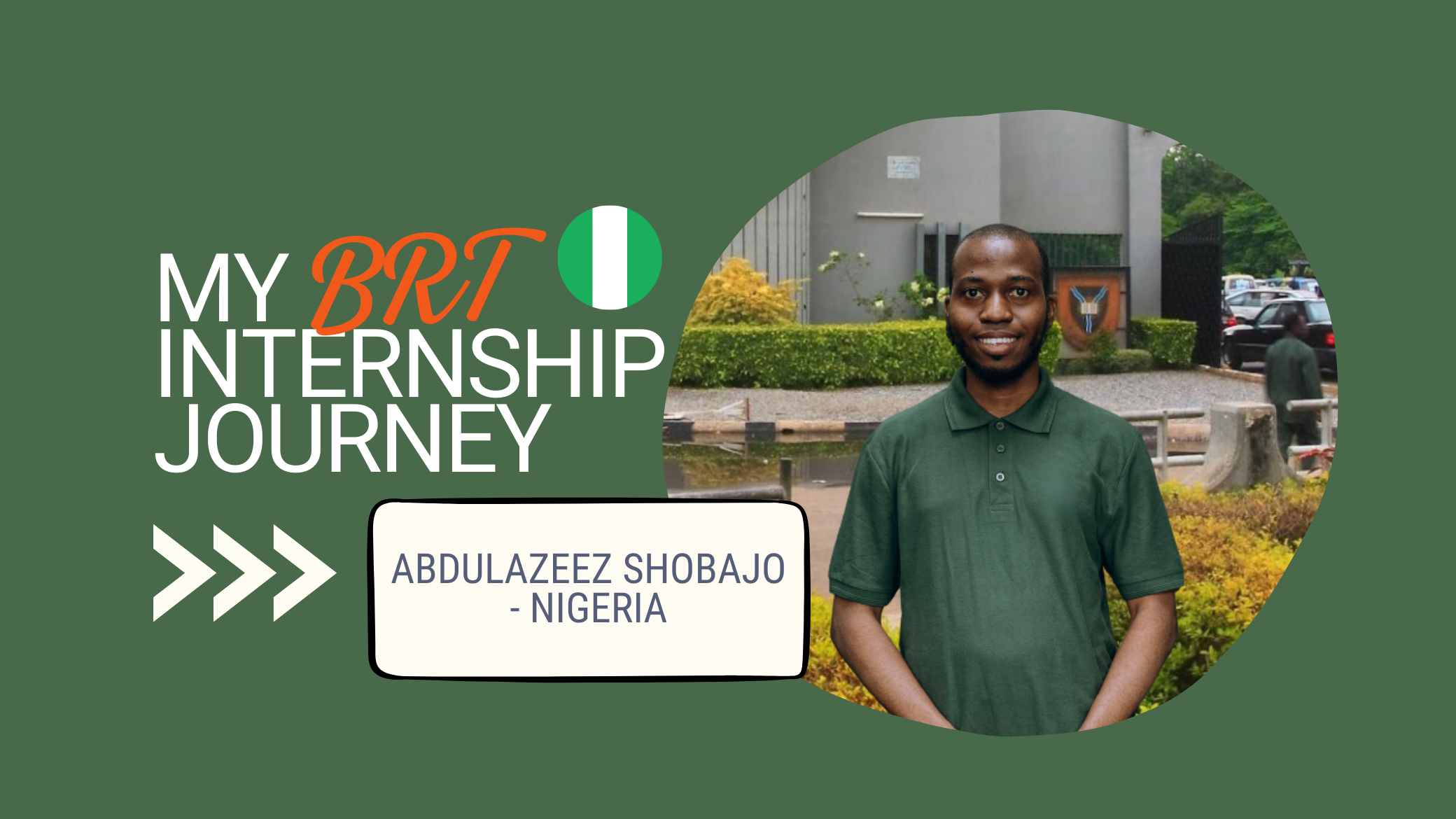Different Shades of Sustainable Environmental Practices: My Internship at the University of Ibaden, Nigeria
To broaden and develop the professional skills of our team members and widen their scientific network and cultural experiences, the BRT encourages its students to embark on internships. These internships are connected to their scientific journey and enable them to have hands-on, practical and in-field experiences, which are critical to their future careers. The internships help to hone their communication, time management, teamwork, problem-solving, and leadership skills, all of which are highly valued assets in young scientists.
Our PhD student, Ing. AbdulAzeez Shobajo, shares insights from his internship experience at the University of Ibaden in Nigeria.
Enjoy reading as he takes you on his internship journey!
My name AbdulAzeez Shobajo – I am a PhD student within the BioResources and Technology Division (BRT) of the Faculty of Tropical AgriSciences at the Czech University of Life Sciences Prague. Over the summer, I had the opportunity to intern at the Department of Agricultural and Environmental Engineering at the University of Ibadan, Nigeria. This hands-on experience provided me with a wealth of knowledge about sustainable practices in soil and water analysis, water purification techniques, and organic waste recycling. Here’s a glimpse into my journey and the invaluable lessons I learnt.
- Soil and Water Analysis: The Foundations of Healthy Agriculture
Soil Quality Test Using a Soil Test Kit
One of the first activities during my internship was learning how to use a soil test kit to assess soil quality. Although we couldn’t perform a practical experiment due to the unavailability of certain reagents, the session was insightful. We explored how the kit helps in determining the soil's nutrient availability, particularly NPK (Nitrogen, Phosphorus, Potassium), pH, and other essential micronutrients like calcium and magnesium. It was fascinating to learn how a simple test can reveal so much about soil health, which directly impacts agricultural productivity.
Soil and Water Analysis: Understanding Soil Properties
We moved into soil analysis techniques used in agriculture, construction, and environmental management. One of the highlights was studying the Atterberg limits—the shrinkage, plastic, and liquid limits of soil. The hands-on experience with the Casagrande apparatus taught us how soil transitions between different moisture states, which is crucial for understanding its behavior in various conditions. Testing soil plasticity and shrinkage further revealed the importance of soil consistency in agricultural and environmental applications.
Soil Erosion Detection and Control
To tackle soil erosion, we simulated different scenarios using soil beds with varying levels of vegetation. We observed that soil with dense vegetation cover effectively resisted erosion, retaining its structure and nutrients. This experiment reinforced the idea that vegetative cover is vital in preventing soil degradation, thereby contributing to sustainable land management.
- Water Purification Techniques: Simplicity Meets Sustainability
Experimenting with Different Storage Materials
In regions with limited access to clean water, understanding simple yet effective water purification methods is crucial. We explored how different storage materials—plastic, clay, metal, glass, and wood—affect water quality. Our experiments revealed some interesting facts:
- Clay containers acted as natural filters, allowing water to pass through while retaining impurities.
- Metal containers allowed the most water seepage but led to contamination due to the presence of oxidized metals.
- Plastic and glass containers, although impermeable, were effective in storing water without any seepage. This experiment highlighted how materials like clay could be harnessed for water filtration in resource-limited areas, offering an affordable solution to clean water access.
- Gaining Insight into Large-Scale Water Treatment
We visited the UI Water Treatment Facility, where I was introduced to the complex yet fascinating process of transforming raw water into safe drinking water. Here’s a quick overview of what I learnt:
- Pre-Oxidation: Water is aerated to oxidize metals like iron and magnesium, preventing stains and taste alterations.
- Clarification and Coagulation: Using alum, impurities clump together and settle, leading to clearer water.
- Filtration: Water passes through layers of activated charcoal, sand, and marble chips to remove particles and neutralize acidity.
- Disinfection: Chlorination ensures long-term water safety, unlike boiling, which can only address immediate contamination.
- Quality Control: Regular monitoring of parameters like pH and total dissolved solids ensures the water meets safety standards.
The facility's holistic approach to water purification was eye-opening, showcasing how various treatment stages work together to provide safe, potable water for the community.
- Organic Waste Recycling: From Waste to Energy.
One of the most exciting projects was learning how organic waste like cow dung can be transformed into ethanol. We collected cow dung, placed it in an anaerobic digester, and allowed it to ferment, producing biogas and nutrient-rich effluent. This effluent was then distilled to extract ethanol.
Using LPG gas as the energy source, we heated the mixture to the boiling point of ethanol (78.5°C). The vapors passed through a cooling coil, condensing into liquid ethanol, ready for use as biofuel. Despite using 10 kg of LPG gas to produce approximately 200 cl of ethanol, the process demonstrated the potential of renewable energy sources and waste recycling.
A Journey of Learning and Growth
This internship was more than just a learning experience—it was a journey into sustainable environmental practices. From soil and water analysis to large-scale water treatment and organic waste recycling, I gained invaluable insights into the practical applications of sustainability. The warm and supportive environment courtesy of my mentors at the university made the experience both educational and enjoyable.
Key Takeaway: Sometimes, the most sustainable solutions lie in simple, nature-inspired techniques. By embracing these methods, we can create a positive impact on our communities and the environment.
Special thanks to Prof. Mobolaji Omobowale, Prof. AbdulGaniy Raji, Engr. Habeeb Alabi, Engr. D.J. Ayalere, Engr. Seun Akinyele, and most importantly, Assoc. Prof. Dr. Hynek Roubik for their support and guidance in making this internship a great success.
For more details on BRT activities, subscribe to our newsletter or follow us on social media for regular updates and highlights.


